10 Best Obsidian Alternatives
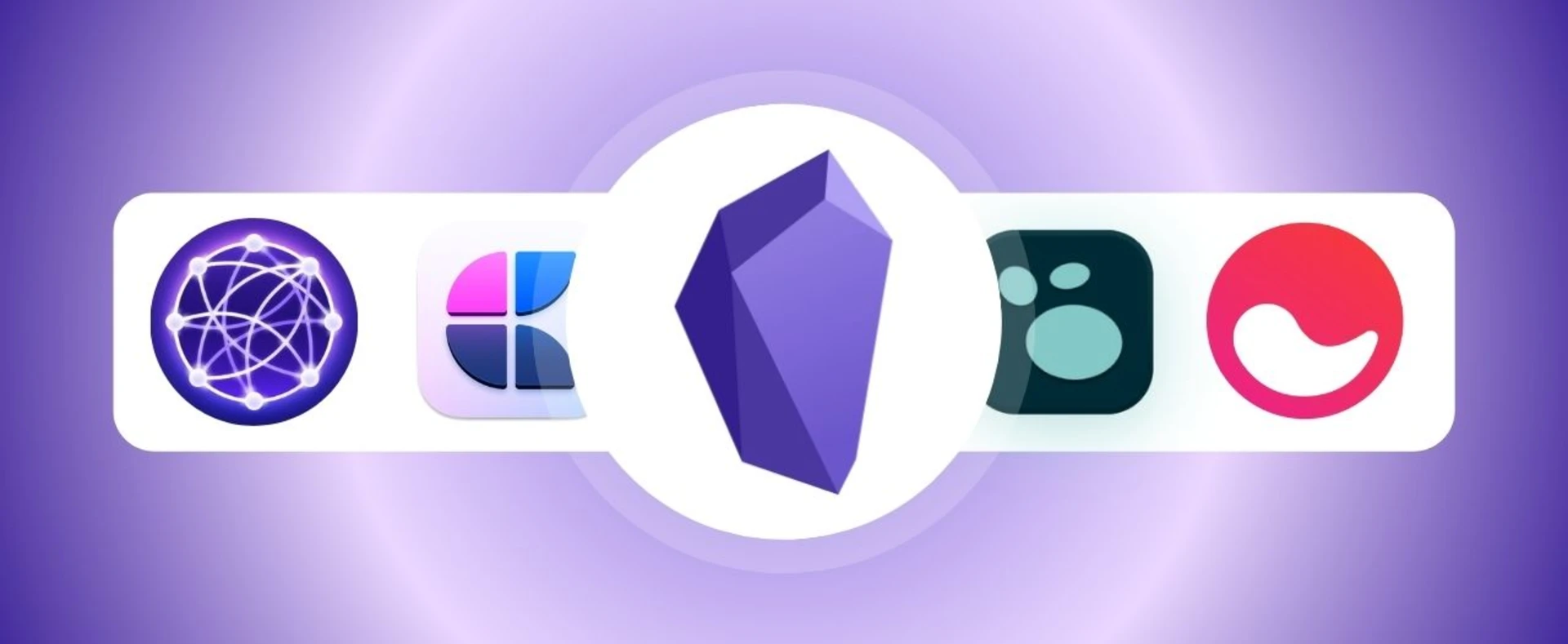
In 2020, note-taking software Obsidian was introduced. Users are able to organize and organize their ideas better with its help.
Storage vaults, two-way connections, and customization possibilities are some of the helpful features of the app. With user-friendly apps, you can also use it on your PC or mobile device.
You can access essential app features like themes, plugins, and API with Obsidian’s free edition. To get started, there’s no need to join, and you’ll get unlimited community support.
The free version’s capabilities are, however, restricted. If you wish to use it for business purposes, you may purchase the premium version for $50 per user per year. Moreover, a number of necessary add-ons, such Obsidian Publish and Sync, are not free.
Having said that, there are some great alternatives to Obsidian that are either less expensive or have more functionality.
Obsidian Alternatives Worth Trying
1) Logseq – Best for Professional Work

The first on the list of Obsidian Alternatives is Logseq. As far as professionals are concerned, Logseq is the ideal notes and scheduling app that every working person should have.
The website looks unique from the start. It has a dark green background with light green text which is easy to read like apps.
Logseq is the ultimate free app for busy professionals who want to write down the random ideas they get. It also schedules tasks and can be integrated with a calendar to track events or tasks.
It is open source, which means you can access all the functional features without paying a single penny. You can write long essays without word limits, which is perfect for students writing their dissertations.
It also comes with a tool to outline articles for you using AI technology. This significantly reduces the time you would have spent searching through multiple sources.
There is a helpful community hub that provides helpful tips and troubleshooting guides to new users. However, what makes Logseq different from Obsidian is how it prioritizes user privacy. All notes you create are encrypted and no one else can access them.
There are over 150 plugins plus 30 themes to choose from. Logseq is available for macOS, Windows, Linux, Android, and iOS.
2) Amplenote – Best for To-Do Lists
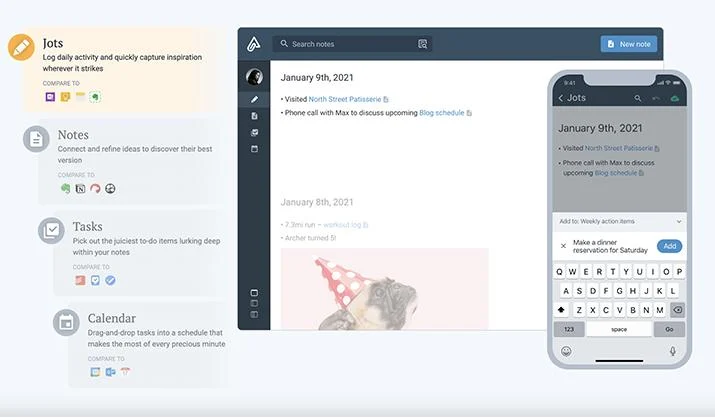
To-do lists may seem simple, but most people need help organizing them. Amplenote is one of the best for creating a comprehensive to-do list for every activity.
Implants have several modes of operation. You can create jots and short texts that remind you of what you were thinking.
These jots can then be upgraded to fully flushed, more coherent notes. Then, there are tasks where you can create to-do lists for all planned activities. You also get a calendar that allows you to synchronize everything for easy access and get instant alerts.
The overall user interface is as easy to use as Obsidian. You can color your cards to avoid confusion. Amplenote also supports images, audio, links and PDFs.
You can also connect everything to cloud storage. So you don’t have to worry about running out of space on your device.
Amplenotes is free, but there are premium plans that come with additional features. These include Pro, which costs $5.84/month, Unlimited for $10/month, and Founder for $20/month.
The tool can be installed on Android and iOS. It also comes with extensions for Google Chrome and Firefox.
3) Notability – Best for Graphical Notes
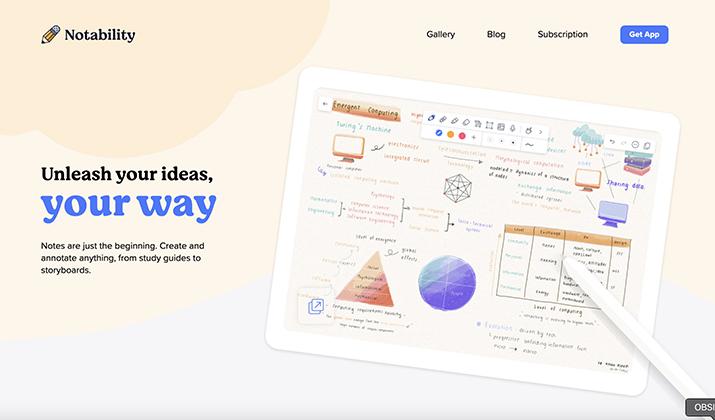
The next up on the list of Obsidian Alternatives is, Notability is a great tool for those who like to make graphical notes. It will be perfect for architects and designers who need to sketch a random idea that they get quickly.
Notability has an intuitive and minimal interface that is very attractive. It combines a series of colors for each graphical item you create. For example, you can scratch something in red and annotate it in a different color to make it stand out.
A special feature called Notability Gallery allows you to share your creations with others. It’s like a central storage space with permission settings that you can tweak to include the people you want.
Another interesting feature that makes Notability amazing is the ability to create handwritten notes and graphics. This is something you can’t do on Obsidian.
While free, there are subscription-based plans like Notability Plus and Notability Starter. However, prices vary by region.
Notability is available for Android and iOS.
4) RemNote – Best for Students
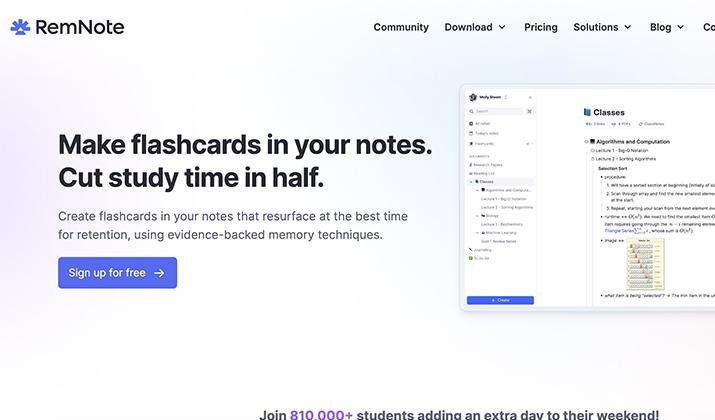
RemNote is the best study partner any student could ever wish for. It claims that more than 800,000 students are using it for their assignments. But what is it about RemNote that makes it better than Obsidian?
First is the ability to create a detailed outline of any topic that is covered. This alone reduces the time a student spends collecting data from various sources for a diagram.
Second, RemNote is easy to use. You get the same amazing features whether you use it on the web, PC, or mobile. You also get unique things like flashcards that track your study patterns. This helps you to know the areas where you need to improve.
RemNote organizes everything you create into easy-to-digest formats, perfect for memory learning before exams. Each study you complete provides a detailed analysis to show you whether you have mastered it or not.
The tool has free and paid versions. The free version handles the basics like annotations and syncing. If you want to unlock more, consider the Pro version, which costs $8/month.
Alternatively, you can get the Lifelong Learner plan, which has a one-time fee of $395.
You can install RemNote on Windows, MacOS, Linux, Android and iOS.
5) Nebo – Best for Handwritten Notes
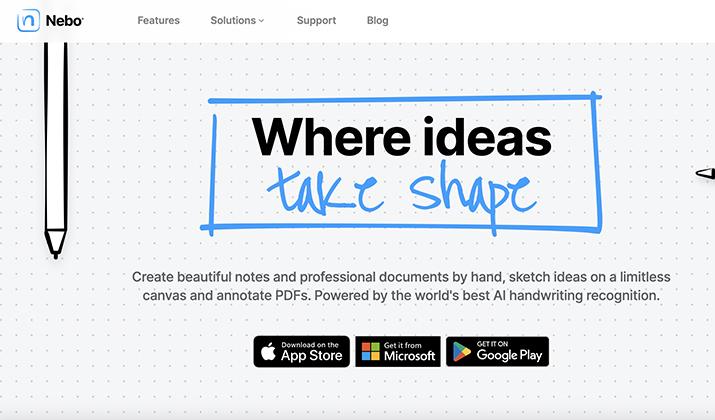
The next up on the list of Obsidian Alternatives is Nebo. It is famous for its support for handwritten notes.
Nebo can convert handwritten notes into text recognized by any computer and mobile system. This is a convenient capability because it eliminates the need to copy or understand. So you have more freedom to make notes in freehand as they pop up in your head.
There’s also support for pen gestures, allowing you to make real-time edits using scratches and underlining. But it works on devices that support pen.
Nebo has customization options like switching to dark mode or changing color codes for notecards.
The tool combines free and premium plans. The free version is limited to basic editor tools, while the premium version offers more. You can use Nebo Pro, which costs $15/month, or Nebo Enterprise, with custom pricing depending on the features you want.
Nebo is compatible with iOS, Android and Windows.
6) Google Keep – Best Free Note App
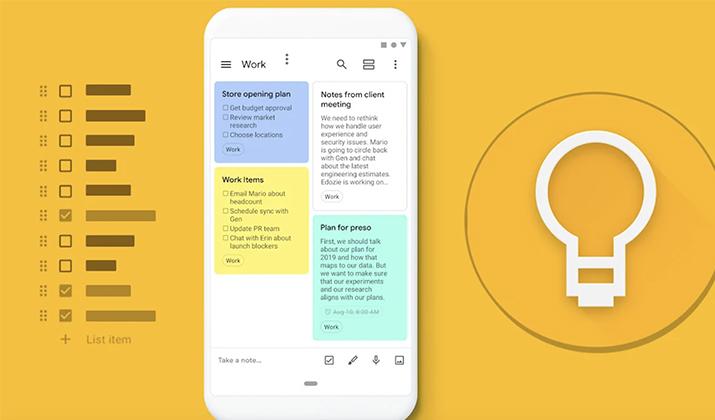
Google Keep is available for free. There are no levels like Obsidian features. Any Google account you open will come with this service pre-installed.
Short notes can be created with links, images and audio. Both mobile and web users can use the platform. To access it, you must be signed in to your Google account.
With Google Keep’s easily customizable interface, you can color-label your notecards for quick identification. Available options include white, orange, red, yellow, teal, green, gray and blue.
Not only do notes contain all topics, they can now be pinned. It is now even more user-friendly than before the addition.
Users can also extract text from images by using optical character recognition (OCR) technology. Additionally, voice notes can be automatically transcribed, saving users the time and effort needed to type.
Copy and paste facility is also available. Although it seems simple at first, it can be very useful for those who write long notes. Google Keep gets feature-rich updates every year.
Google Keep can be accessed on your smartphone or via the web using the Android and iOS apps.
7) Evernote – Most Versatile
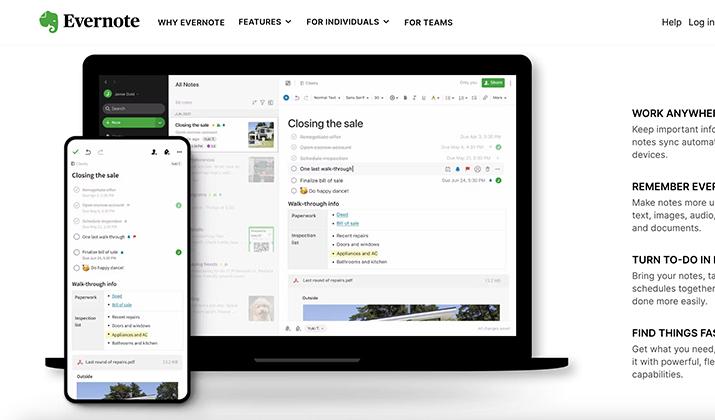
The next on the list of Obsidian Alternatives is Evernote. Another well-known multitasking and note-taking program that has been around for a while is Evernote. It’s the most flexible Obsidian alternative, enabling you to work on multiple projects at once.
You can organize a lot, including taking short notes and organizing your work.
With the ability to add images, links, or audio, it’s the ideal software for taking notes during meetings. Users can link notifications to calendar events on their mobile devices or PCs to receive timely warnings when needed.
In case you have too much on your plate, Evernote also allows you to create to-do lists. Everything is at your fingertips, whether you want to run errands, do laundry, or shop.
Additionally, the program offers alternatives for long-form writing. As a novelist, you can use Evernote to jot down your ideas and then export them to various writing programs.
This app is also useful for students who enjoy reading and want to take notes on important points.
There are paid and free versions of Evernote. Evernote Personal costs $129.99 per year, while Evernote Professional costs $169 per year. Evernote Teams, priced at $24.99 per user, is available for larger teams.
It works with iOS, Android, Windows, and macOS.
8) Simplenote – Best for Multiple Devices
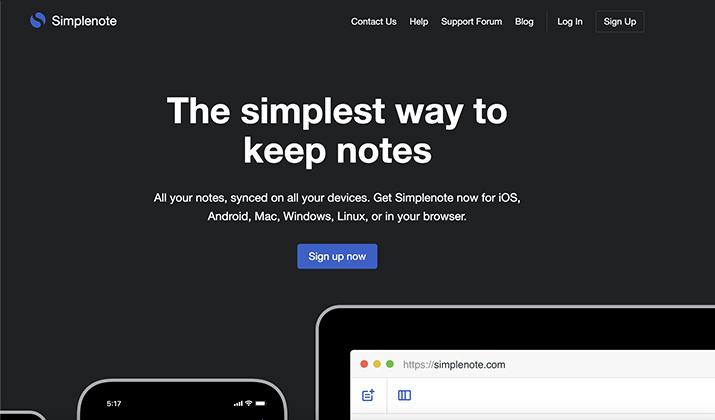
The next on Obsidian Alternatives is, Simplenote is what you need if you enjoy taking notes on any device, wherever you are.
The main advantage that separates Simplenote from Obsidian is the free seamless sync. Once you start on your smartphone, you can resume the note-taking process later on another device.
The best part is that there is no need to press the sync button once an hour. Everything is updated instantly on all apps.
With Simplenote, you can create to-do lists, take notes, save important links, and more.
Tags can be added to each note to make them much easier to find. Your notes will be more organized if you can use these tags to organize them.
Moreover, Simplenote is very customizable. Themes and fonts can be changed according to your preferences. For users who spend hours writing long notes with the tool, the dark theme is especially important.
Importing and exporting your documents is another useful feature of Simplenote. This means you won’t lose anything when collaborating with other note-taking apps on this list.
Simplenote works with iOS, Android, macOS, Windows and Linux and is completely free.
9) Joplin – Best for Scheduling Tasks
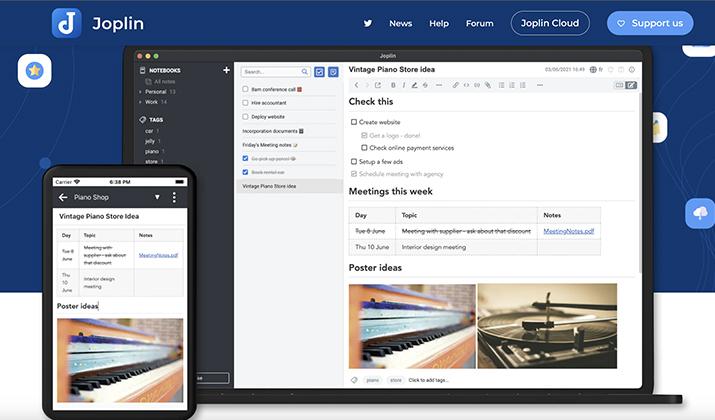
The second last on the list of Obsidian Alternatives is, Joplin is an open-source note-taking application designed primarily for task scheduling. If you have too much on your plate and can’t keep track of everything, Joplin will take care of you.
Multimedia notes, including PDF files, audio, images, and videos, are supported. Additionally, it’s one of the few note apps on this list that support unique math functions.
Within the app, you can directly create mathematical expressions and diagrams. For students who prefer digital copies of their texts for study purposes, this makes it perfect.
Joplin also has strong integrations with cloud storage providers. That way, you don’t have to worry about running out of room. Just write as much as you want and save it in the cloud.
With just one tap of your screen, you can share all your creations with other people as well. Joplin gives you URL links in your notes that open freely in any browser.
Users who enjoy customizing the appearance of their work can also choose from a variety of customization options. With the Extensions API tool, you can create scripts and plugins and change theme fonts.
Joplin, like Obsidian, is not independent. Three pricing tiers are available, ranging from $2.65 to $7.38 per month.
Joplin offers apps for iOS, Android, Linux, Windows and macOS.
10) Milanote – Best for Creative Projects
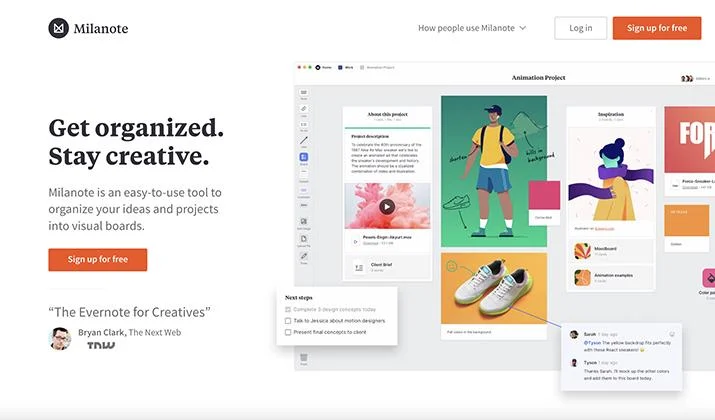
The last on the list of Obsidian Alternatives is MilanoteFor creative types, Milanote is an ideal note-taking and organization app. Among all the apps on our list, its interface is the most colorful.
You can use Milanote to create any type of notes you can think of, from short summaries to extensive essays.
You can add PDFs, audio files, videos and images to your notes. Many other file formats including JPGs, Microsoft Word, Excel, and a variety of design files.
The innovative Milanote Web Clipper lets you save all your inspiring ideas from any website. This is an extension that works with Google Chrome, Safari and Firefox.
The app also has an attractive visual organization. It’s the kind that helps creative people streamline their ideas through customizable artboards.
Whiteboard also has a collaborative feature where creators can share ideas or brainstorm with each other remotely.
There are paid and free versions of Milanote. The premium edition costs a little bit more than Obsidian. A personal plan is available for $9.99 a month. Ten users can use the Team edition, which costs $49 per month.
Milanote is compatible with Android, iOS, macOS and Windows.
ALSO READ:
- Photo Viewer For Windows 11
- ExitLag Free Alternatives
- Sound Equalizer For Windows 10 PC
- Torrent Downloader Apps For Android
- Torrent Sites For TV Shows
- Mac Cleaner Software
- Manga Apps for Android & iPhone
- Korean Drama Apps to watch KDrama
- Google Snake Game Mods
- Image Downloader Extensions for Chrome
Wrapping Up
Google Keep stands out as the best free alternative. It’s ideal for those who want a basic note-taking app for their everyday music.
If you are a professional I recommend Logseq.
RemNote is perfect if you are a student or want to use it for educational purposes.

